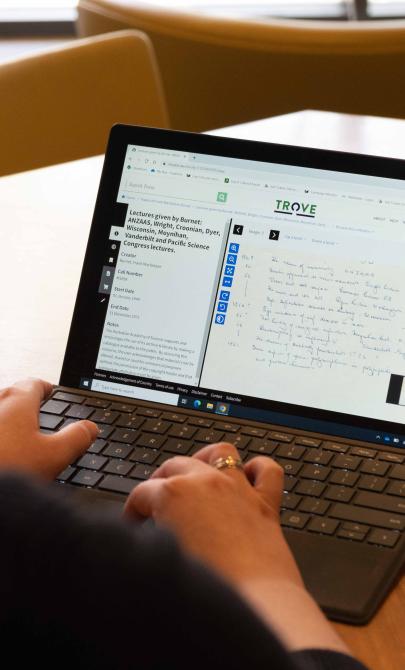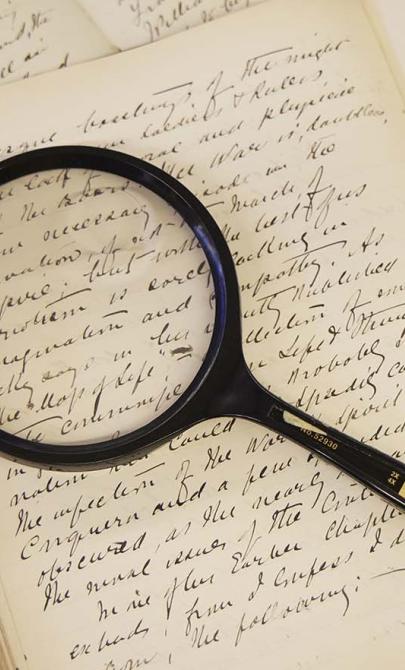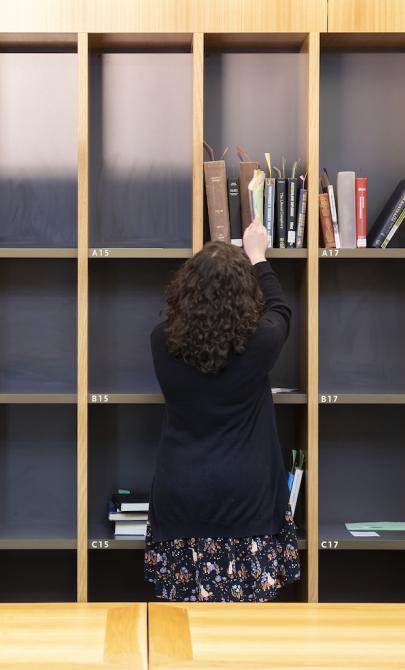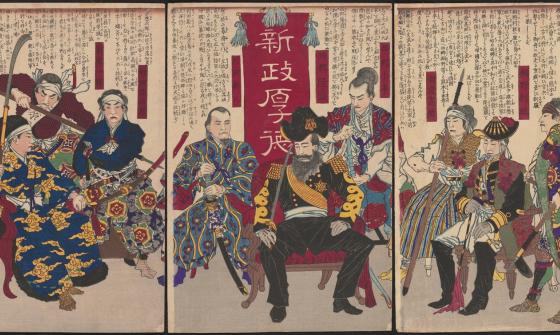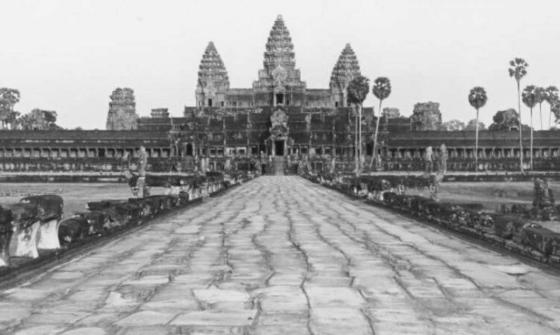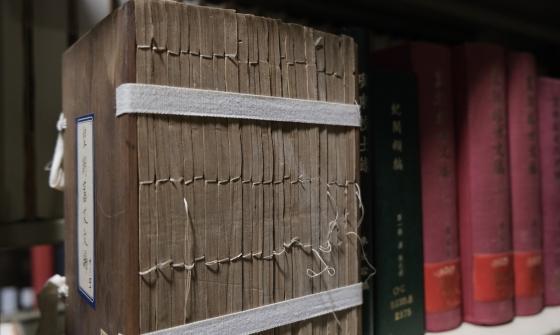Williams Collection
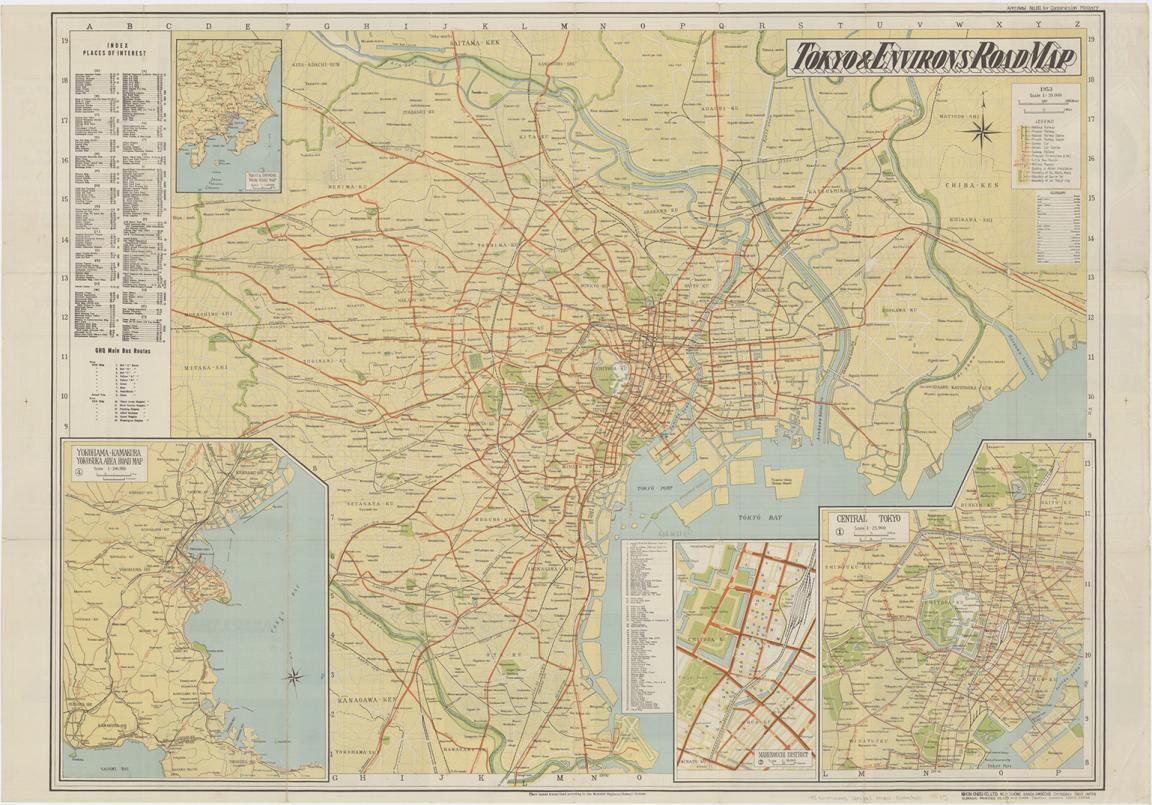
Tokyo and environs road map, 1953, nla.gov.au/nla.obj-1584417804
Tokyo and environs road map, 1953, nla.gov.au/nla.obj-1584417804
Key items in the collection
Highlights from this collection demonstrate its historical significance and variety.
The Williams Collection includes around 3,200 items such as books, pamphlets, magazines, newspapers, and printed ephemera. Most of the material is in English, with some works in French and Japanese.
The collection focuses mainly on Japan, with smaller sections on China and Korea. It features many books about the experiences of European travellers and residents in Japan, as well as works on Japan’s history, foreign relations, politics, military campaigns, businesses, foreign missions, society, customs, local history, art, architecture, literature, legends, philosophy, and religion. There are also books about Tokyo, Kobe, and the foreign settlements, along with dictionaries, guidebooks, novels, and short stories.
While most of the collection consists of 20th-century works, it also includes some 19th-century titles dating back to the start of the Meiji period. Examples of notable works include:
- Rutherford Alcock, The Capital of the Tycoon: A Narrative of a Three Years’ Residence in Japan (2 vols, 1863)
- M. Bickersteth, Japan as We Saw It (1893)
- Isabella Bird, Unbeaten Tracks in Japan (2 vols, 1881)
- John Reddie Black, Young Japan: Yokohama and Yedo (2 vols, 1880–81)
- Anna D’A, A Lady’s Visit to Manilla and Japan (1863)
- Raymond Comte de Dalmas, Les Japonais, leur pays et leurs moeurs: voyage autour du monde (1885)
- Christopher Dresser, Japan: Its Architecture, Art and Art Manufactures (1882)
- Henry Faulds, Nine Years in Nippon (1887)
- Robert Fortune, Yedo and Peking: A Narrative of a Journey to the Capitals of Japan and China (1863)
- John Gadsby, My Wanderings, Being Travels in the East (2 vols, 1869)
- Edward Greey, The Golden Lotus and Other Legends of Japan (1883)
- William Elliot Griffis, The Mikado’s Empire (1890)
- Arthur Collins Maclay, A Budget of Letters from Japan (1889)
- James Murdoch, From Australia and Japan (1892)
- Sherard Osborn, Quedah: A Cruise in Japanese Waters: The Fight on the Peiho (1865)
- Henry Spencer Palmer, Letters from the Land of the Rising Sun (1892)
- Edward J. Reed, Japan: Its History, Traditions and Religions (2 vols, 1880)
- Andrew Steinmetz, Japan and Her People (1859)
- Bayard Taylor, Japan in Our Day (1881)
- Friedrich von Wenckstern, A Bibliography of the Japanese Empire (1895)
- W.N. Whitney, A Concise Dictionary of the Principal Roads, Chief Towns and Villages of Japan (1889).
Other authors in the collection include J.O.P. Bland, Pearl S. Buck, Lafcadio Hearn, Yukio Mishima, James Michener, Donald Keene, and Junichiro Tanizaki. Many books include handwritten notes or typed inserts by Harold S. Williams.
The collection also holds runs of historic newspapers, such as:
- Japan Chronicle (1923–35)
- Japan Herald (1904–08)
- Kobe Chronicle (1899–1901).
Books donated by Gertrude Williams focus on Japanese and Chinese art, including painting, woodblock prints, and flower arrangement. These include exhibition catalogues, calendars, picture books, and volumes from the Kodansha Library of Japanese Art. Many have Gertrude’s bookplate and handwritten notes.
The Williams Map Collection consists of maps relating to Japan with a few items relating to China and Korea. The maps hold a heavy focus on tourist information on Japan such as tourist brochures and road maps, however political maps, development plans, and artistic impressions of specific areas are also included. William's main collecting focus was on Kobe, as this was his place of residence, however material from larger cities such as Osaka and Tokyo are present.
The Williams Collection includes personal and family documents, correspondence, subject files, newspaper clippings, typescripts of articles by Williams and others, scrapbooks, and printed ephemera. The subject files, created between 1949 and 1980, form the largest part of the collection. They include notes, references, newspaper clippings, and occasionally photographs about individuals, families, organisations, businesses, clubs, newspapers, events, and topics. These files provide a valuable resource on Japan's foreign settlements from the Meiji Restoration onwards.
The collection also includes papers from Gertrude Williams, reflecting her interest in Japanese arts and crafts. These feature typescript articles, newspaper clippings, prints, and photographs.
Williams compiled 36 photograph albums covering Kobe, Tokyo, Osaka, Yokohama, Nagasaki, and other subjects from around 1860 to 1970. The Kobe albums, the largest group, include many photographs of the James Estate at Shioya. The collection also contains loose photographs, negatives, and stereoscopic and aerial views.
In addition, there are 16 framed etchings and an album of sketches and watercolours.
About Harold S. Williams
Early life and move to Japan
Harold Stannett Williams (1898–1987) was born in Melbourne and educated at Trinity Grammar School and Melbourne High School. After working in the Commonwealth Laboratory and studying medicine at the University of Melbourne, he visited Japan in 1919. During this visit, he unexpectedly secured a position as an assistant with the Scottish mercantile firm Findlay Richardson & Co. in Yokohama. Transferred to Kobe in 1920, he decided to settle permanently in Japan. In 1926, Williams became manager of the silk firm Cooper & Co. Ltd., which later became Cooper Findlay & Co. Ltd.
Military service and return to Japan
Williams left Japan in 1941, enlisting in the Australian Army. He served in Africa, the Pacific, and Burma during World War II and returned to Japan in 1945 as part of the British Commonwealth Occupation Forces. Discharged in 1949 with the rank of major, he joined efforts to revive the English firm A. Cameron & Co., eventually becoming its managing director. He retired in 1962, though he remained the sole shareholder.
Contributions as a writer and collector
In 1953, Williams began publishing articles about Japan's foreign settlements, appearing in the Mainichi Daily News and other journals. His books explored the history and lives of foreigners in Japan, including Tales of the Foreign Settlements in Japan (1958), Shades of the Past or Indiscreet Tales of Japan (1959), and Foreigners in Mikadoland (1963). In 1996, selected writings were republished in West Meets East: The Foreign Experience of Japan, featuring sketches by his wife, Gertrude (Jean) Williams.
Life in Shioya and legacy
In 1949, Harold and Gertrude Williams acquired a property in the Shioya hills outside Kobe. The home, with its immaculate garden and stunning views of the hills and Osaka Bay, became Williams' residence for the rest of his life. It also housed his extensive collection of books, manuscripts, photographs, and artworks. Williams aimed to document the contributions of foreigners to Japanese life, culture, and history, as well as the history of the Foreign Settlements. His collection remains a testament to his dedication to preserving this unique aspect of Japanese history.
Background to the collection
In 1970, Williams decided to donate his collection to the Library and set up a trust fund to ensure its preservation. Most of the books were transferred in 1978, followed by the manuscripts, personal papers, and photographs in 1981. After his death in 1987, Gertrude Williams donated additional art books, photographs, manuscripts, and etchings and sketches by Hiroshi Kambara. In 2002, their son, Peter Williams, contributed more albums and papers. The Harold S. Williams Trust Fund has also supported the purchase of additional Japanese books.
The books, pamphlets, some of the newspapers and the artworks in the Williams Collection are grouped and housed in the Asian Collections. They have been catalogued individually and the call numbers have the prefixes HSW, HSWq, HSWf and HSW pam. Single issues or short runs of newspapers are housed in the Newspapers Collection at X 1303.
The personal papers, manuscripts and photographs are held in the Manuscripts Collection. Use the papers finding aid.
Parts of the collection were microfilmed in 2004. The subject files (series 1–2) and the microfilm is held at Mfm G28398–28410. The 36 photograph albums were filmed on 202 microfiche, which are held at mc G4244.
This guide was prepared using these references:
- Corinne Collins (comp.), Guide to the Papers of Harold S. Williams in the National Library of Australia, National Library of Australia, Canberra, 1999.
- Andrew Gosling, Westerners in Japan: The Harold S. Williams Collection at the National Library of Australia, National Library of Australia News, vol. 3 (4), January 1993, pp. 11–13.
- Pauline Haldane, Australia and Japan: The Harold S. Williams Collection, in Brown, Yu-Ying, (ed.), Japanese Studies: Papers Presented at a Colloquium at the School of Oriental and African Studies, University of London, 14–16 September 1988, British Library, London, 1990, pp. 75–90.
- Jennifer Gall, Interview with Gertrude (Jean) Williams, foreign resident in Japan, prior to and following World War II, 1989, ORAL TRC 2448.
- Keiko Tamura, Forever Foreign: Expatriate Lives in Historical Kobe, National Library of Australia, Canberra, 2007.
